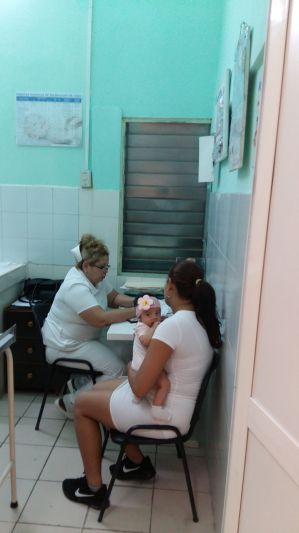Health in Cuba
Cuba is a developing country, but health indicators such as infant mortality and life expectancy are similar to those in the Netherlands. In 2019, infant mortality in Cuba was below five per thousand live births (4.4 / 1000) while in the Netherlands it was 3.5 / 1000. In 2019, life expectancy at birth was 78.9 years in Cuba and in The Netherlands this was 81.5 years. Read more.
Factors that can explain these achievements in Cuba are: free medical care , universal access to medical services, high density of doctors (8.9 /1000) and great emphasis on prevention. At the beginning of the revolution (1959), prevention was aimed at avoiding Infectious diseases and it is in the decade of the 80s with the beginning of the family doctor program that the prevention of diseases in general became a task of the family doctor. The family doctor also deals with the healing and rehabilitation of patients.
In Cuba there is also a strong emphasis on involving the community in medical care. The medical duo of the doctor and family-nurse is the axis of medical care in the community. They are involved in families, schools and mass organizations in solving the socio-medical problems of the community. Programs to promote / prevent health are also carried out by these organizations in conjunction with the doctor. The doctor-nurse team is also linked to community policlinics, hospitals and mental health centers resulting in a well functionated health system.
Medical education
Medical education in Cuba stands at a high level. Currently, there are 22 Medical Sciences Faculties, distributed throughout all the provinces of the country.
There are agreements with different countries such as South Africa, Ecuador and students from these countries have the opportunity to study medicine in Cuba. Only foreign students are received at the Latin American School of Medicine in Havana (ELAM). In other Cuban universities, foreign students study with the Cubans. These students have the chance to train to become doctors in Cuba. After the training they go back to their own community.
Gail Reed: Where to train the world’s doctors? Cuba.
What can we learn from Cuban public health?
Cuba is the country par excellence where you can learn in the field of Public Health. The family doctor and the nurse are the pillars in primary care. They are responsible for 700 to 1500 patients who live in the neighborhood. The work of the doctor and nurse duo is not only aimed at healing and rehabilitation but also prevention. Several clinics in a community work alongside a community polyclinic. Specialists also give consultations in polyclinics.
For more information you can read the following articles:




